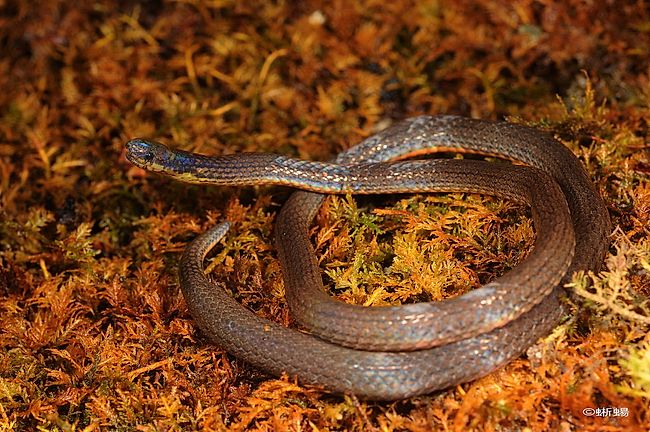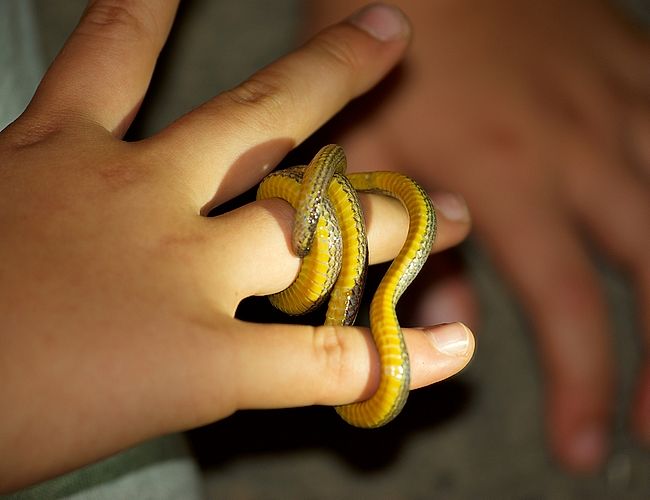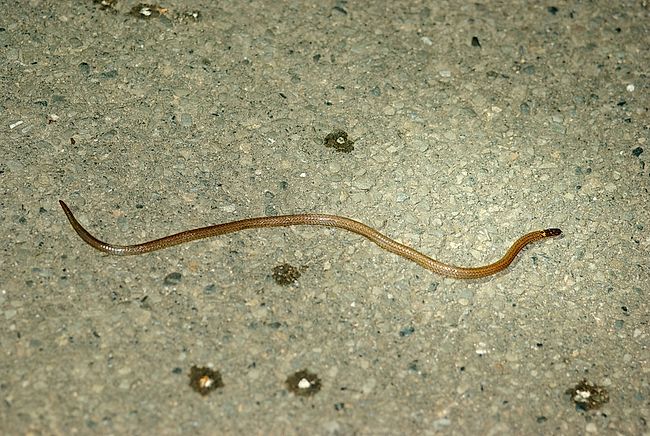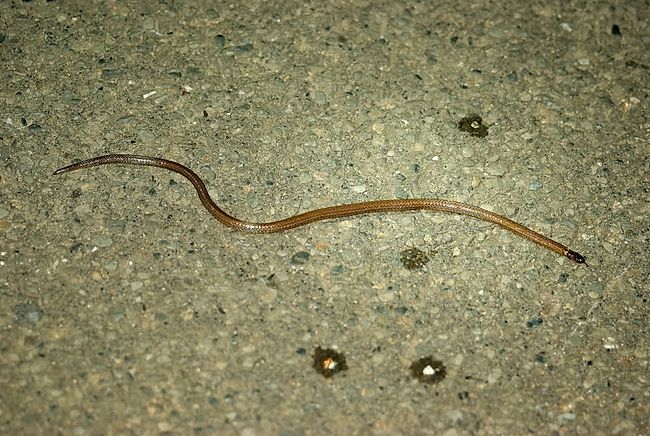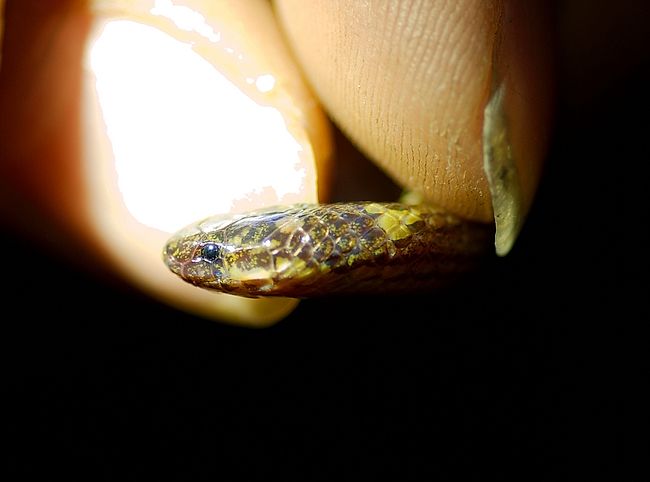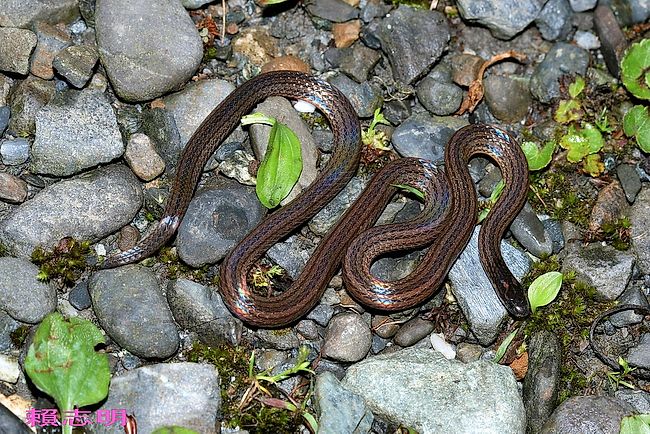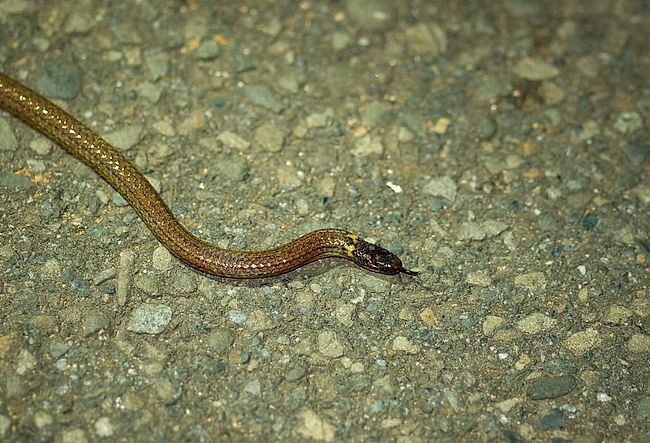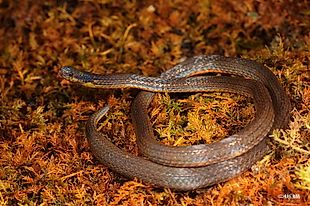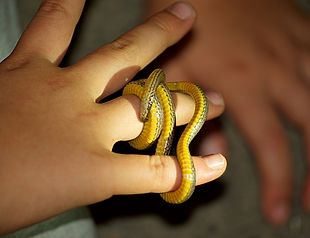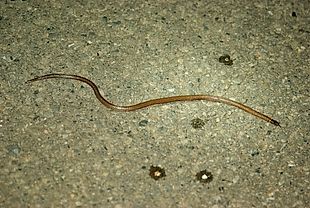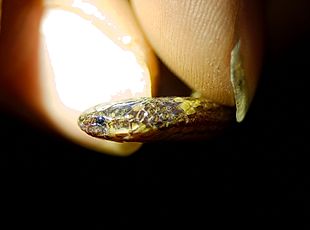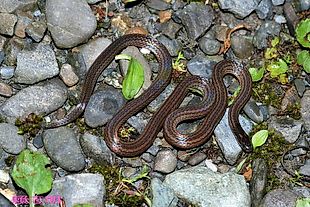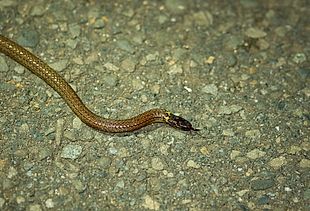Calamaria pavimentata
Collared Reed Snake
鐵 線蛇 (tie3xian4she2)
Status: Not Protected
Non-venomous
Family
Colubridae, subfamily Calamarinae
Max. length
40 cm
Occurrence in Taiwan
Throughout Taiwan and Orchid Island, up to 1500 m altitude. Rare.
Global Distribution
India (Assam), W. Malaysia (incl. Pulau Tioman), Thailand, Laos, Vietnam, Cambodia, Myanmar, South China (Hainan, Fujian, Guangdong, Guangxi, Guizhou, Sichuan, Yunnan, Zhejiang), Taiwan, Japan (Ryukyu Islands).
Description
Small snake; total length up to 40 cm. There are 13 rows of scales, all are smooth and iridescent. Head is small and not distinct from neck, but the shields are large; the prefrontals are enlarged (slightly longer than broad) and there are no loreals, temporals or internasals. Body is cylindrical and slender; tail is short, ending in a spine. Eye is small, bead-like; iris is dark brown to black, indistinct since it blends with dark head, and pupil is round, black, and blends with rest of eye. Tongue is short, with reddish stem and diffuse gray fork tips with dark brown base. Upper head, body and tail are reddish brown to blackish brown. The dorsal shields of the head may show with diffuse light areas, and the lower part of the upper labials is lighter in color. There may be 1-2 pairs of light spots, one light cross band or one pair of light streaks on the nape, and up to 10 longitudinal lines of faded black along upper body and tail. The scales on upper body are dark-edged. Ventral head is light cream. Ventral body and tail are yellow to orange; there is a mid-ventral line of black on underside of tail. Anal scale is entire, and subcaudals are paired.
Biology & Ecology
This mostly nocturnal, oviparous snake is the smallest member of Taiwan's colubrid family.
It is fossorial and burrows in soil, leaf litter and decaying logs, which makes it hard to spot in the wild.
It preys on small invertebrates such as insects and earthworms. It has a very gentle disposition and refrains from biting attackers, stinging them with its pointy tail instead.
Etymology
Calamaria: from the Latin calamarius, meaning a tube for holding pens; pertaining to a writing reed,
derived from the Greek word kalamos, meaning "tube, reed"; probably referring to the non-tapered shape;
pavimentata is Latin for "paved".
The Chinese name 鐵線蛇 (tie3xian4she2) means "Wire (鐵線) Snake"
Notes
In Taiwan, C. pavimentata is found in a variety of colorations. More research will be needed to determine if these are merely a result of polymorphism or whether they actually represent different species or subspecies.
Further Info







